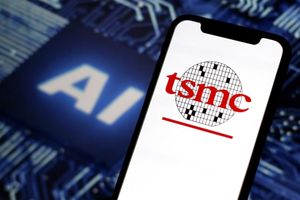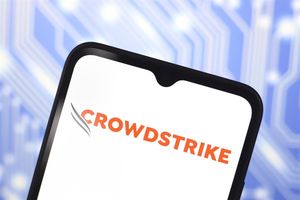IR and MDR Cases Highlight Attackers Are Exfiltrating Data in Just Three Days
Compromised Credentials Top Root Causes for Second Year
OXFORD, U.K., April 02, 2025 (GLOBE NEWSWIRE) -- Sophos, a global leader of innovative security solutions for defeating cyberattacks, today released the 2025 Sophos Active Adversary Report, which details attacker behavior and techniques from over 400 Managed Detection and Response (MDR) and Incident Response (IR) cases in 2024. The report found that the primary way attackers gained initial access to networks (56% of all cases across MDR and IR) was by exploiting external remote services, which includes edge devices such as firewalls and VPNs, by leveraging valid accounts.
The combination of external remote services and valid accounts aligns with the top root causes of attacks. For the second year in row, compromised credentials were the number one root cause of attacks (41% of cases). This was followed by exploited vulnerabilities (21.79%) and brute force attacks (21.07%).
Understanding The Speed of Attacks
When analyzing MDR and IR investigations, the Sophos X-Ops team looked specifically at ransomware, data exfiltration, and data extortion cases to identify how fast attackers progressed through the stages of an attack within an organization. In those three types of cases, the median time between the start of an attack and exfiltration was only 72.98 hours (3.04 days). Furthermore, there was only a median of 2.7 hours from exfiltration to attack detection.
“Passive security is no longer enough. While prevention is essential, rapid response is critical. Organizations must actively monitor networks and act swiftly against observed telemetry. Coordinated attacks by motivated adversaries require a coordinated defense. For many organizations, that means combining business-specific knowledge with expert-led detection and response. Our report confirms that organizations with proactive monitoring detect attacks faster and experience better outcomes,” said John Shier, field CISO.
Other Key Findings from the 2025 Sophos Active Adversary Report:
- Attackers Can Take Control of a System in Just 11 Hours: The median time between attackers’ initial action and their first (often successful) attempt to breach Active Directory (AD) - arguably one of the most important assets in any Windows network – was just 11 hours. If successful, attackers can more easily take control of the organization.
- Top Ransomware Groups in Sophos Cases: Akira was the most frequently encountered ransomware group in 2024, followed by Fog and LockBit (despite a multi-government takedown of LockBit earlier in the year).
- Dwell Time is Down to Just 2 Days: Overall, dwell time – the time from the start of an attack to when it is detected – decreased from 4 days to just 2 in 2024, largely due to the addition of MDR cases to the dataset.
- Dwell Time in IR Cases: Dwell time remained stable at 4 days for ransomware attacks and 11.5 days for non-ransomware cases.
- Dwell Time in MDR Cases: In MDR investigations, dwell time was only 3 days for ransomware cases and just 1 day for non-ransomware cases, suggesting MDR teams are able to more quickly detect and respond to attacks.
- Ransomware Groups Work Overnight: In 2024, 83% of ransomware binaries were dropped outside of the targets’ local business hours.
- Remote Desktop Protocol Continues to Dominate: RDP was involved in 84% of MDR/IR cases, making it the most frequently abused Microsoft tool.
To shore up their defenses, Sophos recommends that companies do the following:
- Close exposed RDP ports
- Use phishing-resistant multifactor authentication (MFA) wherever possible
- Patch vulnerable systems in a timely manner, with a particular focus on internet-facing devices and services
- Deploy EDR or MDR and ensure it is proactively monitored 24/7
- Establish a comprehensive incident response plan and test it regularly through simulations or tabletop exercises
Read the full It Takes Two: The 2025 Sophos Active Adversary Report on Sophos.com.
Learn More About
- The benefits and cons of different MFA methods
- The growing exploitation of RDP
- Attacker techniques, tactics, and procedures (TTPs) in prior Active Adversary reports
- Sophos X-Ops and its groundbreaking threat research by subscribing to the Sophos X-Ops blogs
About Sophos
Sophos is a global leader and innovator of advanced security solutions for defeating cyberattacks. The company acquired Secureworks in February 2025, bringing together two pioneers that have redefined the cybersecurity industry with their innovative, native AI-optimized services, technologies and products. Sophos is now the largest pure-play Managed Detection and Response (MDR) provider, supporting more than 28,000 organizations. In addition to MDR and other services, Sophos’ complete portfolio includes industry-leading endpoint, network, email, and cloud security that interoperate and adapt to defend through the Sophos Central platform. Secureworks provides the innovative, market-leading Taegis XDR/MDR, identity threat detection and response (ITDR), next-gen SIEM capabilities, managed risk, and a comprehensive set of advisory services. Sophos sells all these solutions through reseller partners, Managed Service Providers (MSPs) and Managed Security Service Providers (MSSPs) worldwide, defending more than 600,000 organizations worldwide from phishing, ransomware, data theft, other every day and state-sponsored cybercrimes. The solutions are powered by historical and real-time threat intelligence from Sophos X-Ops and the newly added Counter Threat Unit (CTU). Sophos is headquartered in Oxford, U.K. More information is available at www.sophos.com.

Contact: Samantha Powers, sophos@walkersands.com






